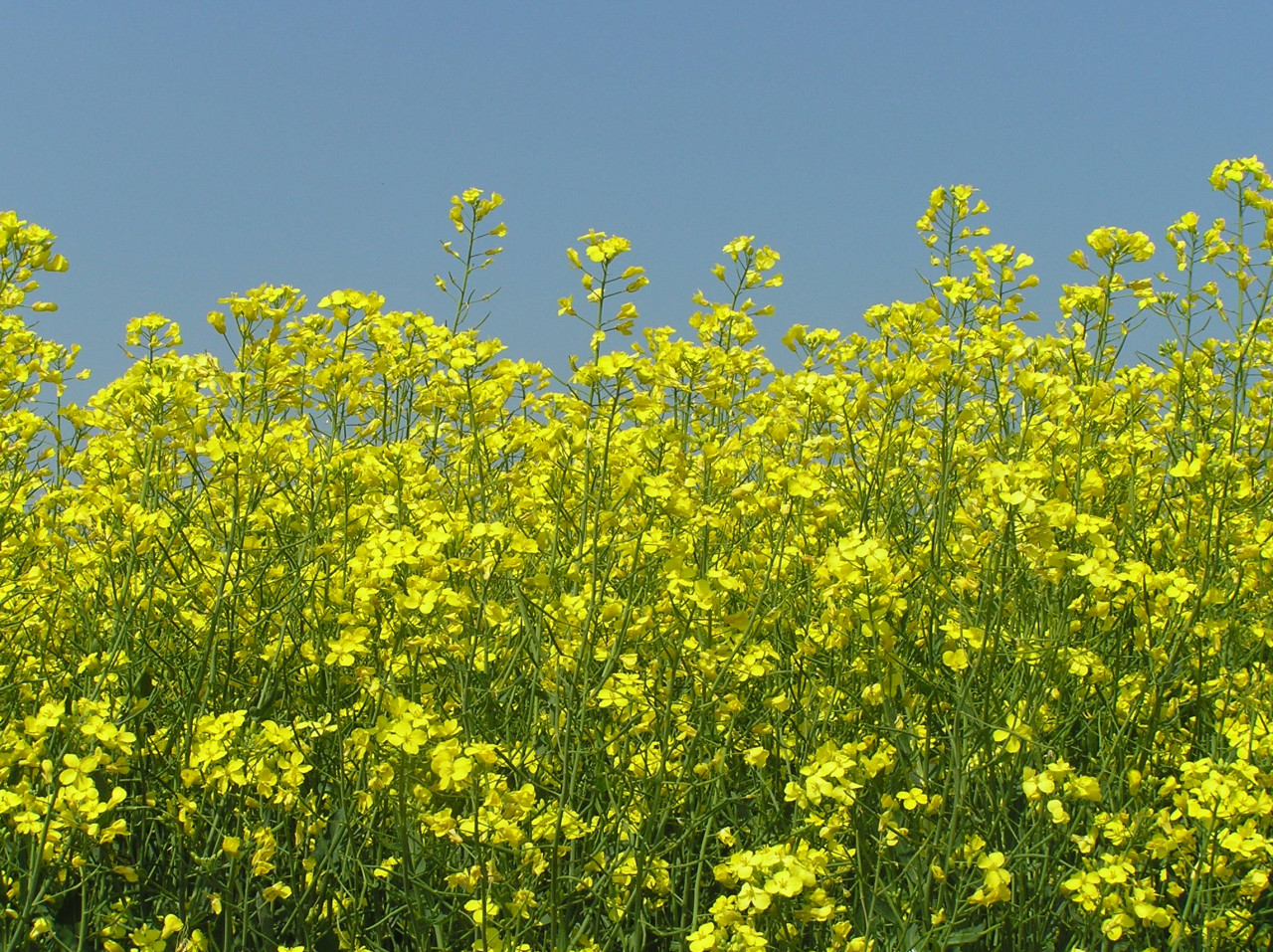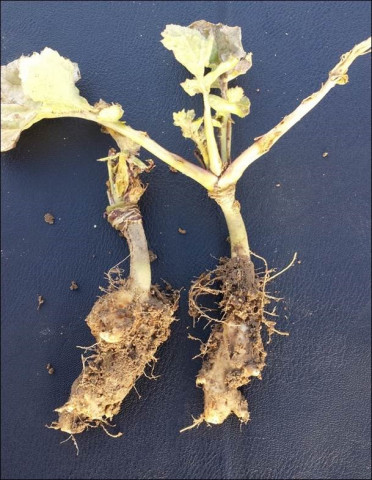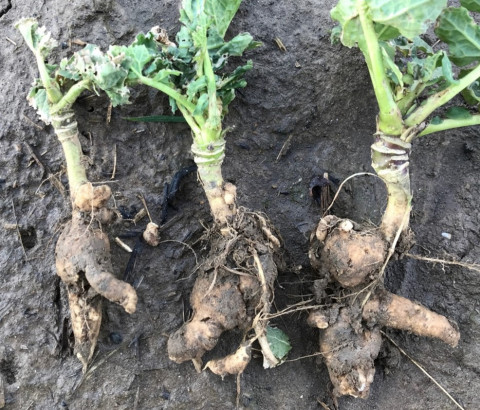Clubroot – mitigating a growing problem
Oilseed rape crops have been through a tough time due to the threat posed by cabbage stem flea beetle. In addition, the crop has also faced some very challenging establishment periods. In response growers have adapted how they establish oilseed rape and many have now resorted to drilling the crop throughout a bigger window than what has been done in the past. There's now also a greater emphasis on drilling crops when the conditions are right, rather than just going by calendar date.
These methods make sense and are absolutely the best way to aid oilseed rape establishment. However, they do have an impact on other elements of oilseed rape husbandry. Clubroot is one challenge that is slowly increasing within oilseed rape crops and growers are reporting more patches of the disease appearing in their fields.
Following seed business development manager, Jim Knight's clubroot advice in our article about getting oilseed rape off to the best start in AGRONOMY 18, I thought I'd give a more detailed insight into what clubroot is and how to manage it.
What is clubroot?
Clubroot, also known as Plasmodiophora brassicae, is a soil borne pathogen of oilseed rape which requires both moisture and warmth to infect the roots of the crop. Once it's established in the crop, there is little that can be done other than monitor and take actions to stop and control the movement of the problem around the infected area.
The symptoms of clubroot are easy to distinguish when the plants are pulled up. As you can see form the image above, the roots are enlarged, deformed and swollen. From above the ground, however, the symptoms are slightly harder to determine. One characteristic is that it appears to be just a short, stunted crop in late autumn/winter.
Clubroot can survive in soil for around 15 years so, as mentioned above, every care should be taken to reduce movement of the infection once its presence is known.
Methods for identifying and managing the disease
Recording the areas of clubroot is an important part in managing it across the farm and its rotation. There are several simple steps you can do early on to observe the pathogen and stop it from spreading across your fields.
- You can soil test for the pathogen; this can give you both a risk score from clubroot ahead of the season and also confirm the presence of the disease.
- If patches are confirmed as clubroot, they can be very obvious on biomass maps as the areas are typically very stunted compared to the healthy areas of an oilseed rape crop. You can view biomass maps in field via the MySOYL app, where you can keep an eye on the affected patches throughout the season and in future years. You can also use the app to cross check the soil pH in these areas too, as this is a typical link to clubroot.
- Once the patches are determined, you can manage them to stop them spreading further. When clubroot is established in a field you need to keep a track of where it is too, as logging the information will help you build a picture of the spread over several seasons. This is particularly important as it can survive and move around across several years.
What to do when you've identified a patch of clubroot:
- Cultivate the clubroot patches in the field last, after you have cultivated the healthy areas. When done, wash the machine down thoroughly and allow it to dry before you cultivate other healthy areas with it.
- Sort out drainage issues as flooding and water spread the infection through the fields quickly, especially when soils are warm.
- Check the soil pH when you plant the next crop.
Managing the infection
If you do find a patch of clubroot there is little you can do to help the crop recover. However, below are a few pointers that can help the crop cope with limited rooting. Please be aware that in severe cases there isn't much that can be done and yield expectations should be adjusted.
- Take a little and often approach with nutrient applications – i.e. smaller doses of major nutrients such as nitrogen applied more regularly
- Applying phosphite to help promote root growth can help
- Foliar applications of nutrients which aren't particularly mobile, i.e. boron, is key.
Rotation
Rotations should be based on longer term thoughts and not just focused on the immediate gross margin for that cropping year. An oilseed rape rotation of one-in-five is a good starting point to reduce the likelihood of oilseed rape developing clubroot. This includes all clubroot host crops such as field brassicas or mustard, as well as the weeds which can host the disease such as charlock and shepherd's purse. These weeds should be a priority for treatment in the true clubroot break crops such as potatoes, cereals and legumes.
Soil pH
You would typically want to lime your soil to a stable pH of 6.5 - 7 for a 'standard' rotation. However, soil pH plays an important role in the severity of clubroot. To combat its spread, you should aim to maintain a pH of 7+, ideally looking to be above a pH of 7.3. It's worth bearing in mind though that this will impact the availability of key nutrients in other crops such as wheat.
A way to mitigate the effects on the wider rotation is to spike the pH when drilling oilseed rape by using a granular lime product. The key time for this is when the soils are still warm enough for the pathogen to infect the crop. A good method to avoid high infestations is to wait until the soil has dropped in temperature, with infection reducing significantly when soils dip under 15oC.
Soil pH varies considerably across fields and SOYL's sampling services can show the zones where soil pH needs addressing. This is the most cost-effective way to identify areas that need optimised management.
Variety
The breeding of clubroot resistant varieties has come a long way and is an important consideration as part of the whole toolbox for managing clubroot. Resistant varieties carry a single gene resistance and, although this is important, it shouldn't be relied on as a silver bullet on its own. Bear in mind too that growing a resistant cultivar does not count as a clubroot break crop.
Resistant varieties such as Mendel and Cracker used to be at a yield penalty to the rest of the varieties in the Recommended List. However, there have been more recent additions and available for this autumn is a variety from DSV called Crocodile. Not only does it have clubroot resistance, it has also been through rigorous testing by AHDB for the Recommended List, which includes testing against the common strains of clubroot found in the UK. Crocodile is currently the highest yielding clubroot variety. You can find out more by downloading the new MyVarieties Seed catalogue.
Drilling date
Where you have patches of the disease or resistant varieties, delaying drilling will help to reduce disease pressure. This advantage is that soils will be cooler, as 15⁰C is a tipping point for clubroot infection. Warmer soils lead to increased pressure versus cooler soils, and September will typically see lower temperatures. The strain of early drilling increasing pressure on resistant varieties is likely to result in clubroot overcoming the seed genetics.
Although the disease lasts a long time and can have significant impacts on the development of oilseed rape crops, there are good options available to help you deal with the challenge. Once you get into the swing of how to record, monitor and restrict the disease from spreading, it should be more manageable on farm.
If you'd like more advice on how to control clubroot on your farm, please get in touch with your local Frontier contact. Alternatively, you can contact the team.
As a subscriber, you’ll receive email alerts each time a new blog is published so you can always stay updated with the latest advice and insights from our experts






Comments